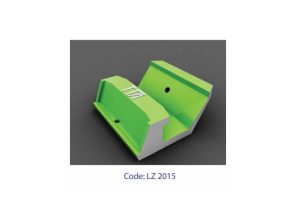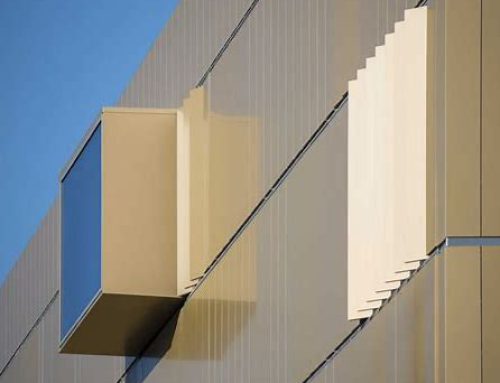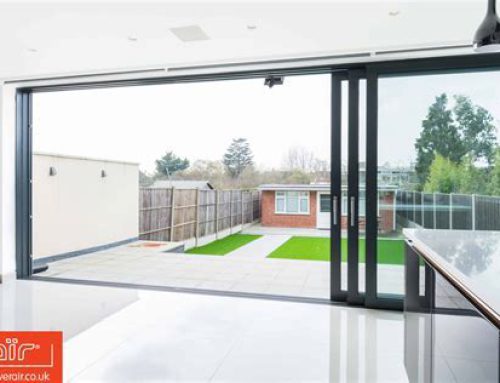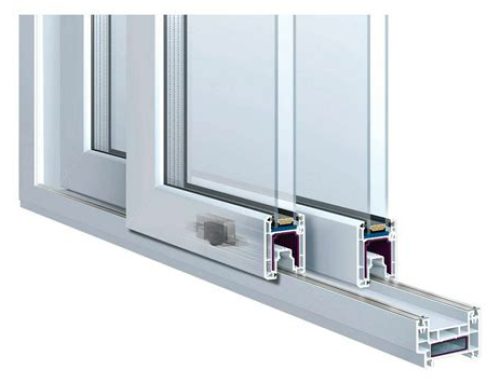Unitized thermal break curtain wall system

Introduction:
Unitized thermal break curtain wall system , In the ever-evolving field of architecture and construction, technological advancements continue to shape the way buildings are designed and constructed. One such innovation that has gained prominence in recent years is the unitized thermal break curtain wall system. This cutting-edge architectural solution combines aesthetics with energy efficiency, offering a host of advantages for modern buildings.
Understanding Unitized Thermal Break Curtain Wall Systems:
A curtain wall is a non-structural outer covering of a building that is designed to keep the weather out and the occupants in. Unitized thermal break curtain wall systems take this concept a step further by incorporating thermal break technology. Thermal breaks are interruptions in the continuity of a material to reduce the flow of thermal energy between conductive materials.
Key Components and Construction:
Unitized curtain wall systems are composed of prefabricated units that are assembled and glazed in a controlled factory environment. These units, often made of aluminum, are then transported to the construction site and connected to the building structure. The thermal break technology is integrated into the system to prevent the transfer of heat and cold between the interior and exterior of the building.
Advantages of Unitized Thermal Break Curtain Wall Systems:
Energy Efficiency: The primary benefit of unitized thermal break curtain wall systems is their exceptional energy efficiency. The thermal break technology helps to minimize heat transfer, reducing the building’s reliance on heating and cooling systems. This not only lowers energy consumption but also contributes to a more sustainable and environmentally friendly building design.
Cost Savings: While the initial cost of installing unitized thermal break curtain wall systems may be higher than traditional curtain walls, the long-term savings in energy costs often outweigh the upfront investment. The reduced need for heating and cooling systems can lead to significant operational cost savings over the life of the building.
Quick Installation: The prefabricated nature of unitized systems allows for faster and more efficient installation compared to traditional stick-built curtain wall systems. This can result in shorter construction timelines, enabling developers to meet tight deadlines and reduce overall project costs.
Customization and Aesthetics: Unitized systems offer architects a high degree of design flexibility. These systems can be customized in terms of color, size, and shape to meet the specific aesthetic requirements of a building. The seamless integration of glass and aluminum creates a sleek and modern appearance, enhancing the overall architectural appeal.
Improved Quality Control: The factory-controlled manufacturing process ensures a higher level of quality and precision in the fabrication of unitized curtain wall units. This reduces the likelihood of on-site errors and ensures that each unit meets the specified performance standards.
Enhanced Weather Resistance: Unitized thermal break curtain wall systems provide superior resistance to weather elements. The tight integration of units, along with advanced sealing techniques, helps prevent water infiltration, air leakage, and the transfer of moisture into the building. This enhanced weather resistance contributes to the longevity and durability of the building envelope.
Sound Insulation: Beyond thermal benefits, unitized systems can also contribute to improved acoustics within a building. The combination of quality materials and precise construction techniques helps minimize sound transmission, creating a more comfortable and noise-controlled interior environment.
Adaptability to High-Rise Construction: Unitized systems are particularly well-suited for high-rise buildings. Their modular design allows for easier transportation and installation at elevated heights, reducing the complexity and risk associated with constructing tall structures. This adaptability makes unitized thermal break curtain wall systems a preferred choice for contemporary skyscrapers.
Maintenance and Repairs: The modular nature of unitized systems facilitates easier maintenance and repairs. If a specific section of the curtain wall requires attention, it can be addressed without affecting the entire system. This modular approach minimizes disruption to building occupants and reduces the overall cost and time associated with maintenance activities.
Compliance with Building Codes: Unitized thermal break curtain wall systems are engineered to meet and exceed building code requirements and industry standards. The incorporation of thermal break technology often enhances a building’s overall energy performance, contributing to compliance with increasingly stringent energy efficiency regulations.
Technological Integration: These curtain wall systems can seamlessly integrate with smart building technologies. The use of intelligent glazing and shading systems, coupled with the thermal efficiency of unitized designs, allows for greater control over a building’s environmental performance. This integration aligns with the growing trend towards sustainable and technologically advanced building solutions.
Market Trends and Future Outlook: As architects, developers, and building owners seek sustainable and high-performance solutions, the demand for unitized thermal break curtain wall systems is expected to continue growing. The ongoing advancements in materials and manufacturing processes will likely lead to even more efficient and cost-effective systems in the future, further solidifying their role in modern construction.
Challenges and Considerations: Despite their numerous advantages, unitized thermal break curtain wall systems also pose some challenges. The initial cost of these systems can be higher than traditional alternatives, and the need for specialized manufacturing and installation expertise may limit their widespread adoption in certain markets. Additionally, customization and design complexity can impact costs and timelines. It is crucial for architects, developers, and construction professionals to carefully weigh these factors against the long-term benefits.
Case Studies: Examining successful implementations of unitized thermal break curtain wall systems can provide valuable insights into their real-world performance. Case studies of projects that have achieved notable energy savings, aesthetic excellence, and overall success through the use of these systems can serve as inspiration for future endeavors. Learning from past experiences helps refine best practices and informs the continuous improvement of these technologies.
Environmental Impact: The sustainability aspect of unitized thermal break curtain wall systems extends beyond energy efficiency. The materials used in their construction, often recyclable aluminum, contribute to reducing the environmental footprint of the building. As sustainability becomes an increasingly critical consideration in construction, the eco-friendly attributes of these systems align with broader environmental goals.
Education and Training: The successful implementation of unitized thermal break curtain wall systems requires a skilled workforce with expertise in both design and installation. Investing in education and training programs for architects, engineers, and construction professionals ensures that the industry can fully leverage the benefits of these advanced systems. This proactive approach fosters innovation and facilitates the widespread adoption of cutting-edge technologies.
Regulatory Landscape: Building codes and regulations continually evolve to address the changing landscape of construction materials and techniques. Staying abreast of these regulatory changes is essential for architects and builders working with unitized thermal break curtain wall systems. Compliance with local and international standards ensures that buildings meet safety, performance, and energy efficiency requirements.
Global Perspectives: The adoption of unitized thermal break curtain wall systems is not limited to specific regions. These innovative solutions have gained traction in diverse climates and construction markets globally. Understanding how these systems perform in different contexts provides valuable insights into their adaptability and effectiveness across various geographical and climatic conditions.
Collaboration and Integration: Achieving optimal results with unitized thermal break curtain wall systems often involves collaborative efforts among architects, engineers, manufacturers, and construction teams. Effective communication and integration of expertise at every stage, from design to installation, are crucial for realizing the full potential of these systems and overcoming potential challenges.
Looking Ahead: As the construction industry continues to embrace advancements in technology and sustainable design, the future of unitized thermal break curtain wall systems appears promising. Ongoing research and development will likely lead to further improvements, making these systems more cost-effective, versatile, and accessible. The integration of smart technologies, coupled with a commitment to environmental stewardship, will shape the next generation of building envelopes.
In conclusion, unitized thermal break curtain wall systems stand as a testament to the industry’s commitment to innovation, sustainability, and efficiency in modern construction. By addressing energy concerns, enhancing aesthetics, and offering a range of practical benefits, these systems have earned their place as a transformative solution in the architectural landscape. As technology continues to advance, the full potential of unitized thermal break curtain wall systems is poised to unfold, contributing to a future where buildings are not only structures but also symbols of sustainable and intelligent design.





Leave A Comment